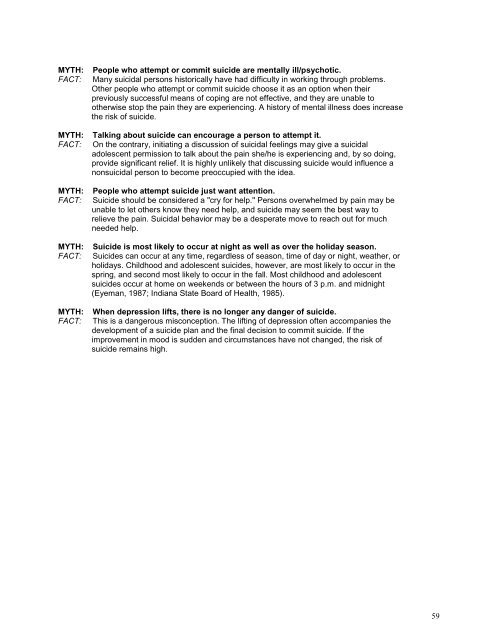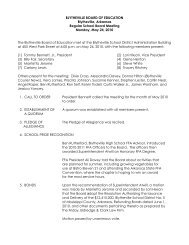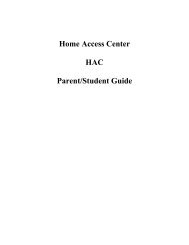District-Wide Safe Schools and Crisis Plan - Blytheville Public Schools
District-Wide Safe Schools and Crisis Plan - Blytheville Public Schools
District-Wide Safe Schools and Crisis Plan - Blytheville Public Schools
You also want an ePaper? Increase the reach of your titles
YUMPU automatically turns print PDFs into web optimized ePapers that Google loves.
MYTH: People who attempt or commit suicide are mentally ill/psychotic.<br />
FACT: Many suicidal persons historically have had difficulty in working through problems.<br />
Other people who attempt or commit suicide choose it as an option when their<br />
previously successful means of coping are not effective, <strong>and</strong> they are unable to<br />
otherwise stop the pain they are experiencing. A history of mental illness does increase<br />
the risk of suicide.<br />
MYTH: Talking about suicide can encourage a person to attempt it.<br />
FACT: On the contrary, initiating a discussion of suicidal feelings may give a suicidal<br />
adolescent permission to talk about the pain she/he is experiencing <strong>and</strong>, by so doing,<br />
provide significant relief. It is highly unlikely that discussing suicide would influence a<br />
nonsuicidal person to become preoccupied with the idea.<br />
MYTH: People who attempt suicide just want attention.<br />
FACT: Suicide should be considered a "cry for help." Persons overwhelmed by pain may be<br />
unable to let others know they need help, <strong>and</strong> suicide may seem the best way to<br />
relieve the pain. Suicidal behavior may be a desperate move to reach out for much<br />
needed help.<br />
MYTH: Suicide is most likely to occur at night as well as over the holiday season.<br />
FACT: Suicides can occur at any time, regardless of season, time of day or night, weather, or<br />
holidays. Childhood <strong>and</strong> adolescent suicides, however, are most likely to occur in the<br />
spring, <strong>and</strong> second most likely to occur in the fall. Most childhood <strong>and</strong> adolescent<br />
suicides occur at home on weekends or between the hours of 3 p.m. <strong>and</strong> midnight<br />
(Eyeman, 1987; Indiana State Board of Health, 1985).<br />
MYTH: When depression lifts, there is no longer any danger of suicide.<br />
FACT: This is a dangerous misconception. The lifting of depression often accompanies the<br />
development of a suicide plan <strong>and</strong> the final decision to commit suicide. If the<br />
improvement in mood is sudden <strong>and</strong> circumstances have not changed, the risk of<br />
suicide remains high.<br />
59
















